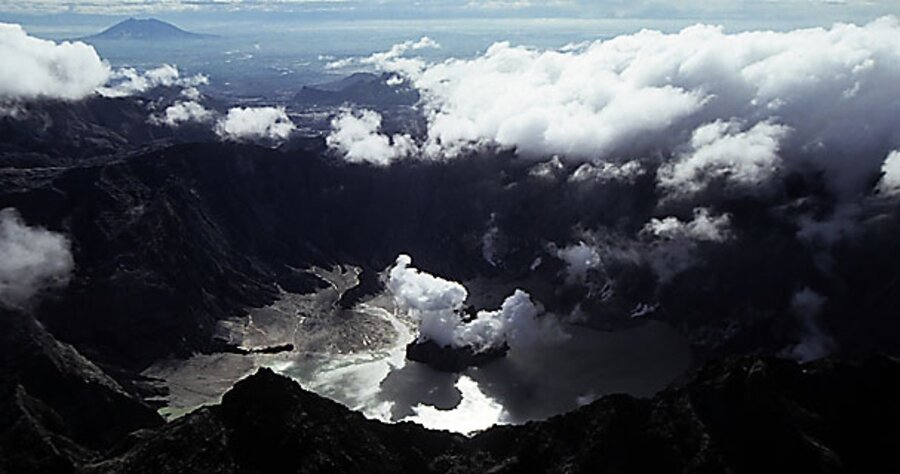Which is the bigger polluter – humans or volcanoes?
Loading...
Q: Could it really be true that a single large volcanic eruption launches more greenhouse gases into the atmosphere than the amount generated by all of humanity over history?
– Steve Schlemmer, London
A: The argument that human-caused carbon emissions are merely a drop in the bucket compared with greenhouse gases generated by volcanoes has been making its way around the rumor mill for years. And while it may sound plausible, the science just doesn’t add up.
According to the US Geological Survey, all the world’s volcanoes – on land and undersea – generate about 200 million tons of carbon dioxide (CO2) annually, while our automotive and industrial activities create some 24 billion tons of CO2 emissions every year worldwide. Those facts speak for themselves: Greenhouse gas emissions from volcanoes are less than 1 percent of those generated by today’s human endeavors.
Another indication that human emissions dwarf those of volcanoes is the fact that atmospheric CO2 levels, as measured by sampling stations around the world set up by the federally funded Carbon Dioxide Information Analysis Center, have gone up consistently year after year regardless of whether or not there were major volcanic eruptions in specific years.
“If it were true that individual volcanic eruptions dominated human emissions and were causing the rise in carbon dioxide concentrations, then these carbon dioxide records would be full of spikes – one for each eruption,” says Coby Beck, a journalist writing for the online environmental news portal Grist.org. “Instead, such records show a smooth and regular trend.”
Furthermore, some scientists believe that spectacular volcanic eruptions, like that of Mt. St. Helens in Washington State in 1980 and Mt. Pinatubo in the Philippines in 1991, actually lead to short-term global cooling, not warming. Here’s why: Sulfur dioxide (SO2), ash, and other fine particles ejected high into the stratosphere by an eruption reflect some solar energy back into space instead of letting it into Earth’s atmosphere. SO2, which converts to sulfuric acid aerosol when it hits the stratosphere, can linger there for as long as seven years, and can exercise a cooling effect long after a volcanic eruption has taken place.
Scientists tracking the effects of the major 1991 eruption of the Philippines’ Mt. Pinatubo on the main island of Luzon found that the overall effect of the blast was to cool the surface of the Earth globally by some 0.5 degrees Celsius one year later, even though rising human greenhouse gas emissions and an El Niño event (a warm water current that periodically flows along the coast of Ecuador and Peru in South America) caused some surface warming during the 1991-93 study period.
In an interesting twist on the issue, British researchers last year published an article in the peer-reviewed scientific journal Nature showing how volcanic activity may be contributing to the melting of ice caps in Antarctica – but not because of any emissions, natural or human-caused, per se.
Scientists Hugh Corr and David Vaughan of the British Antarctic Survey believe that volcanoes underneath Antarctica may be melting the continent’s ice sheets from below, just as warming air temperatures from human-induced emissions erode them from above.
Got an environmental question? Write: EarthTalk, c/o E – The Environmental Magazine, Box 5098, Westport, CT 06881. Or e-mail: earthtalk@emagazine.com.





